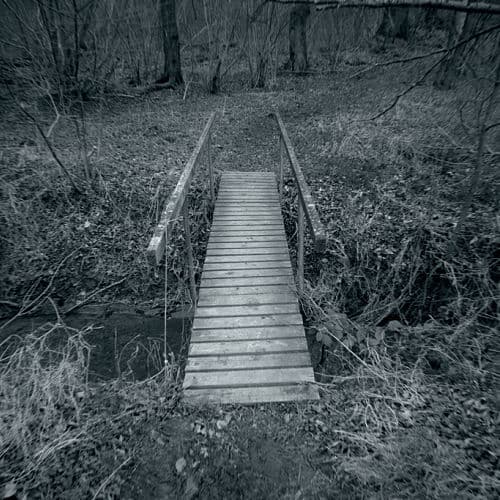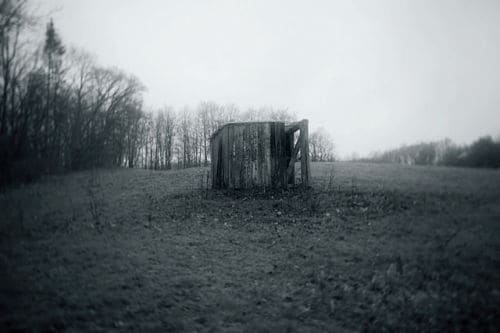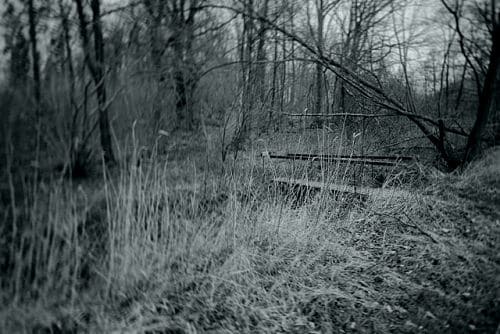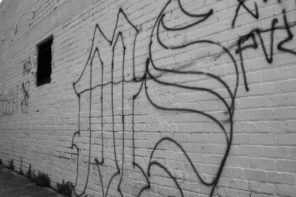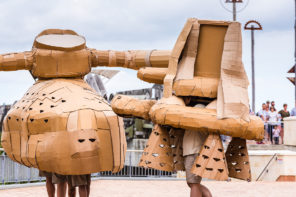The person I wish to present in the following, a 72-year-old man named Herman, has withdrawn from almost all human contact. But to what extent could we accept the idea that Herman is a singularity? Has Herman, who lives on an island in Southern Sealand, Denmark, achieved what Kierkegaard understands to be a form of “true heroism”: the point where the subject sheds his or her social identity and stands naked (before God)?
Socially isolated people are, perhaps for obvious reasons, difficult to study. While they are, first of all, difficult to find, they may often be reluctant to allow the anthropologist to spend extended periods of time in their vicinity. Only by demanding nothing and by repeatedly pointing out that I will only be in his house for as long he feels comfortable am I able to get to know Herman. Though he in fact never asks me to leave, I often sense that he is in a solitary mood – this is the term I use in my field notes – and I will leave after only a few minutes. I always feel as if I am invading Herman’s solitude, that I am disrespectful of the fact that he has chosen to establish a boundary between himself and the island community. Most of the time he answers my questions with a shrug or a sigh, but on a few occasions I am able to trigger a response that leaves me breathless: I ask him if his days are long – and rather than the usual shrug, Herman launches into a long, complex rant about how he experiences time itself. I almost drop my pen, as I try to capture how he had come to realize how plastic time really was.
Some days went by with the snap of a finger while others – that is, most – almost stood still.
Such outbursts leave me in a state of perplexity: Am I getting a rare glimpse into the true world of Herman – or is this as much a surprise to Herman as it is to me?
Invading Herman’s solitude
The bay offers a dramatic backdrop to Herman’s old farmhouse, which looms out of the gloom at the end of the long dirt road. Even in the middle of the day, the house seems too dark inside. The tiny windows in the kitchen once offered a view over the fields and the bay, but are now so dirty that they would let in little light on the brightest of days. As the evening comes, heavy shadows are cast through the open door into the kitchen from where Herman has access to a long, narrow garden. Where the garden reaches the stony beach a tall pine tree is standing sentinel and a few withered bushes cling desperately to the unyielding stones, curved and bent over as though they might be torn away by the wind at any moment. The farmland that surrounds the house was gradually bought up by the neighboring farms between 1990 and 2002 and the only part that remains today is the house and the small garden where I spent the afternoons with Herman. The breeze off the water offers a welcome bit of cool after a muggy day. Herman often seats himself on the garden bench at this time of day, as the black painted wood gives up the last heat of the day. The sun lingers low on the horizon, and Herman attaches the shades to his glasses. We talk about the old crumbling shed. It is gradually turning moss-green like the field on which it stands. Someone should just tear it down. Herman remarks that this has happened to all the wooden structures on the land that once belonged to him. It is no longer safe to cross the small, moldering bridge down by the stream. The wilderness is creeping up on the house from all sides.
Until he turned 68, he had shown none of the infirmities of old age. Life before then had been marked by a distant, continuous flow of motion and events. But things began to disclose themselves in new and more forceful ways to Herman, in tandem with his gradual withdrawal from the island community. He talks about the pain in his right leg at length. In fact, while he cannot recall the experience and sensations involved in walking, running and bicycling in his youth, he has grown fiercely aware of every movement of his body. The waltzing flow of his youth has now given way to a dense, rhythmic stomp; his steps are heavy as he moves through the house or when he walks down to the elderberry bushes at the far end of his garden. He often drops his cane. This forces him to bend over to pick it up – an aching task that requires his full attention for up to a minute. A pause is then introduced into the overall rhythm of walking. Waking up in his bed on the second floor is followed by a ritual: while still lying in bed, Herman counts down from twenty. On the last count he resolutely lifts his right leg out of the bed. A flash of pain immediately extends from the knee to his right foot and darts up through his spine, settling in his shoulders. This leaves him in an uncomfortable position that forces him to push himself out of bed. He then sits there on the edge of his bed for a few minutes until his feet get cold.
The stairs from the bedroom spiral down to the small hallway. There is no handrail, nothing to cling to. When he and his ex-wife, Else, moved into the house in the early 1970s, they had no need for such assistance. In fact, during their first decades in the house he gave no consideration at all to the narrow stairs. If someone had asked him then how many steps there were from his bedroom to the ground floor, he would not have had the faintest idea. But that was then. While the smells – and noises – of the house have long ago regressed into the background, he has come to know everything there was to know about those damn stairs. He realizes that while the steps had once been covered by dark green paint, the wood beneath is now exposed. They have become worn toward the center, which make them treacherously slippery.
Over the years, as the sensation in his leg turned from occasional spasms to prolonged pain, Herman gradually developed new ways of descending the stairs; the least painful method involves a form of crab walk. Like a crab, he walks sideways, carefully monitoring every joint in his shoulders, spine and legs for discomfort. Cane first, then left foot, and then right, with the agony as his knee takes his weight, joined by a sharp stabbing in the lower spine. He had once asked a home-helper why it always hurt in his back when he went down the stairs, since, he had added, what did his back have to do with his right knee? She had replied sincerely that Herman was no longer a young man. He had known that already and was not really satisfied with her answer. Yet, he explained to me, the home-helper had done her best. And he preferred her feeble answer to those home-helpers who attempted to actually “help” him. Last year, someone from the municipality had come by his house to “talk about his situation”. She said that he should come more often to the local activity center. Herman had merely said, “No, that’s not for me”. When I asked him why he never went to the activity center he repeated the answer: “No, no, that’s not for me”.
During his daily descent down the stairs in his small house, Herman pauses five steps from the bottom, just before the stairs turn sharply to the right. The next step is particularly tricky. It takes the shape of a small, triangular platform that offers almost no support. Taking a couple of steadying breaths he glares down at the challenge before him with trepidation. He has nearly beaten the steps again. His hand is trembling on the handle of his cane as he draws a final deep breath and steps forward. He lets out a deep groan as his ankle gives way with a horrifying wrench and he plunges into space. His first thought is simply to close his eyes and let himself fall. But his body disagrees; it twists, his right arm is flapping feverishly. His breath is stuck in his throat like a lump of lead. With a foreboding grunt, Herman stumbles onto the next step like a drunkard, the wooden cane clattering to the floor below him, his left hand scratching furiously against the blue tapestry. As he slips down the last stairs, his body still inexplicably perpendicular, the fingers seems to be searching for the absent handrails that Else had asked him to put up decades ago. Herman’s ungainly feet wrestle with the floorboards and suddenly, after a series of complex, staccato movements on the last step, Herman’s body suddenly stills as the heel of his left foot alights abruptly upon the tiles of the hallway with a sharp sound. Herman finds himself at the bottom of the stairs.
And there it is: that dreadful, yet often comical, suspended moment between stubbing a bodily extremity – most often a toe – and detecting the inescapable pain. The emerging warmth that suddenly flips over you like a tidal wave and reveals itself as an all-consuming agony. You stupid old bastard! You bastard! Gasping, slack-jawed at the foot of the steps, Herman feels the tingling of anticipation. Here it comes! It is unspeakable, a searing spasm up his right side from foot to jaw. He squeezes his eyes tight shut, clamps his right hand over his mouth as he locks his jaws together. But he still makes a high-pitched, jagged moan, his entire body shaking with the effort of staying upright. Herman staggers sideways and ends up leaning against the wall at an awkward angle while inhaling in brief gasps. He then forces himself to draw a long and heavy breath through his nose. The pain starts to pass. He notices that this breathing produces a slurred whistling sound. Herman moves his limbs cautiously, one by one, assessing the damage. His right leg is on fire, his foot numb; his neck hurts with every movement, sending vicious little stings down his spine. He bends down with some effort, slowly, slowly, snatches his cane with a hooked index finger, draws himself up once more and limps off to the kitchen, relieved. Then he realizes that he is giggling. Warm bubbles of saliva have collected at the corner of his mouth and before entering the kitchen he produces a worn handkerchief from his breast pocket – carefully as if he were a magician about the perform a trick – and wipes his face. After having carefully folded the cloth he turns the corner; the cane is now tapping on the brown kitchen tiles.
Beyond Loneliness
The solitary person is a cause of anxiety for a least two reasons: on the one hand, he or she represents a possibility facing us all; in many Western countries in particular, people are extremely familiar with stories of old people who live out their last years in abject solitude, forgotten and dejected. But at the same time, the solitary person may seem to challenge society as a whole and question the choices of the people who live their lives as socially active individuals. Could this be the reason why we so persistently label solitude as “loneliness”? This term incorporates the hope that the person still has a desire for the social, that, eventually, the lonely person will encounter new, satisfying relationships. Thus, solitude is, ideally, temporary. We may even actively seek out solitude through meditation, walks in the wild and so on. But isn’t the purpose of such activities precisely the eventual return to society? This would then imply that the social is an ultimate value, an ultimate good. This notion makes the following quote seem strange. The famous anthropologist Claude Leví-Strauss ends one of his early books with this sweeping reflection: “To this very day, mankind has always dreamed of seizing and fixing that fleeting moment when it was permissible to believe that the law of exchange could be evaded, that one could gain without losing, enjoy without sharing.” Levi-Straus speculates that drawn from a primitive, mythological core, a dream of solitude saturates all societies.
In other words, humans live in hope of an impossible world where one could live apart and keep to oneself.
That anthropology has contributed minimally to shedding light on the human drive for solitude is, perhaps, of little surprise. Like the social sciences at large, anthropological analysis emerges from the idea that humans are first and foremost socially constituted: the self is a conglomerate of relationships, and these are a fundamental and defining part of human existence. It is a truism in anthropology to say that humans are first and foremost relationally constituted. Yet the line between truism and normativity may be hard to identify when anthropologists allow for the axiomatic understanding of “relations”, as underlying and motivating all human activity, to become not only what is – but also the way it ought to be.
The question remains: how can we understand the singularity, the hero of solitude, without ascribing to him or her the urge for social reintegration? While this question may seem overly abstract, the problem has real-life consequences – not least in relation to people who choose to live alone and who thereby do not live up to various ideals of communality and social inclusion.
Focusing on the ways in which solitary living is received in many Western countries today – for instance by being talked about in terms of “loneliness”, may offer a way to enrich the tapestry of anthropology and the palettes we choose from when living our lives.

